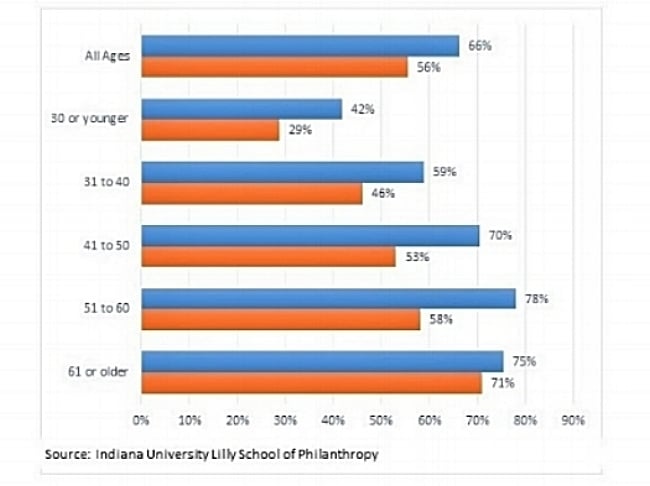
What’s holding you back? A simple yet powerful question.
It was the question I asked a corporate donor many years ago, which changed the trajectory of their relationship with my organization.
I had taken over a portfolio from another colleague, and was briefed on one donor who had pledged a multi-million gift, but hadn’t yet agreed to a payment plan. I was assured the gift intention was solid.
So I proceeded as if all systems “go,” building my relationship with this donor. But with each conversation, I met a noncommittal wall. Finally after many meetings, I asked: “We’ve briefed you on the goals of the project. I’ve introduced you to the program team who have designed the best solution to this problem. We’ve shown you updates on our plans and progress. But you seem hesitant to move forward. What’s holding you back?”
I instantly felt a shift in the room. The corporate representative relaxed in his seat and proceeded to tell me all the things that had been missing from the conversation when they made the pledge. That one question put us on a totally different trajectory. I was able to listen and incorporate what was important to them into a new gift agreement.
I thought about this experience, and the simple but powerful question, when I saw the recently released Giving USA (GUSA) report.
Fundraisers are rejoicing that giving in the US jumped nearly 10% topping the $410 billion mark—a new record. And while I usually say the glass is half full, let me offer a few words of caution about the findings.
-
Individual giving is still stuck at 2% of GDP. We have not convinced more people to make the charitable contributions which would shift that percentage.
-
Mega-gifts are on the rise. But at what cost and for how long? While the GUSA report shows increased contributions, mega-gifts are the cause. We saw a spike in contributions to Donor Advised Funds at the end of last year as well as a higher number of exceptional gifts in the range of hundreds of millions to even billion dollars. Those examples aside, a recent Blackbaud study found that of 1,000+ nonprofits surveyed, 20% of donors gave just a bit more than 80% of those organizations’ revenue. Current focus seems to be on large-gift fundraising, and we’re forgetting about smaller to mid-level supporters.
-
The number of donors is actually declining. In fact, according to Indiana University Lilly Family School of Family, in 2014 56% of American households made a charitable donation, down from 66% in 2000. Giving declined across every age group and demographic — and, in particular, among donors age 51-60 years, the “ideal” age for major donors.

Compounding all of this is the uncertainty of the new tax law. What will it all mean for nonprofits this year and in the future?
As fundraisers, we need to ask ourselves AND our donors this question:
What’s holding us back?
Reflecting on the GUSA report, clearly despite all our hard work, we fundraisers haven’t yet moved the philanthropic needle where it’s most important. Good fundraising isn’t just about total dollars contributed. It’s about building sustainable, long-term relationships with our donors. Here are three things I know to be true:
-
You can’t do everything. Now’s the time to prioritize your fundraising on the best ROI. Focus first and foremost on you donor retention rate. If you are celebrating your donors and reporting back on the impact you are able to make because of their support, they will feel connected and will likely give again when you next ask. (But only if they feel that their last gift made a difference.) Build on the areas where you can upgrade giving levels. Monthly giving programs and investing in getting to know your mid-level donors will yield high retention rates (on average 80-90%) and likely a larger percentage of your overall annual revenue. Remember that if they are giving to you, they already believe in your work. The question becomes, can you inspire them to invest more deeply?
-
Fundraising is not cookie-cutter. Demographics in the U.S. are changing. We are more racially diverse. Women’s philanthropy is on the rise. Donor motivations vary by age groups, gender, and backgrounds. Are you tailoring the way you engage with your full spectrum of donors in a way that really resonates with them?
-
High-tech fundraising isn’t the answer. Yes, social media, texting, and online giving have become the norm. But to really build authentic and lasting relationships, it takes good old-fashioned personal contact. The kind that involves picking up the phone and talking to your donors. Or hand-writing letters or notes and putting them into the mail with a stamp! Are your organization’s staffing capacity, systems, and (most importantly) culture designed to do this? If not, what’s holding you back?
Yes, the 2018 Giving USA report gives us a glimmer of hope that philanthropy is standing the test of time. But, the truth is we live in uncertain political and economic times and have yet to really know the effect the new tax law will have on giving—especially from smaller to mid-level donors. Now’s the time to think critically about what holds us as fundraisers and all our donors back from flexing our philanthropic muscle to advance social good even more than we already do.
